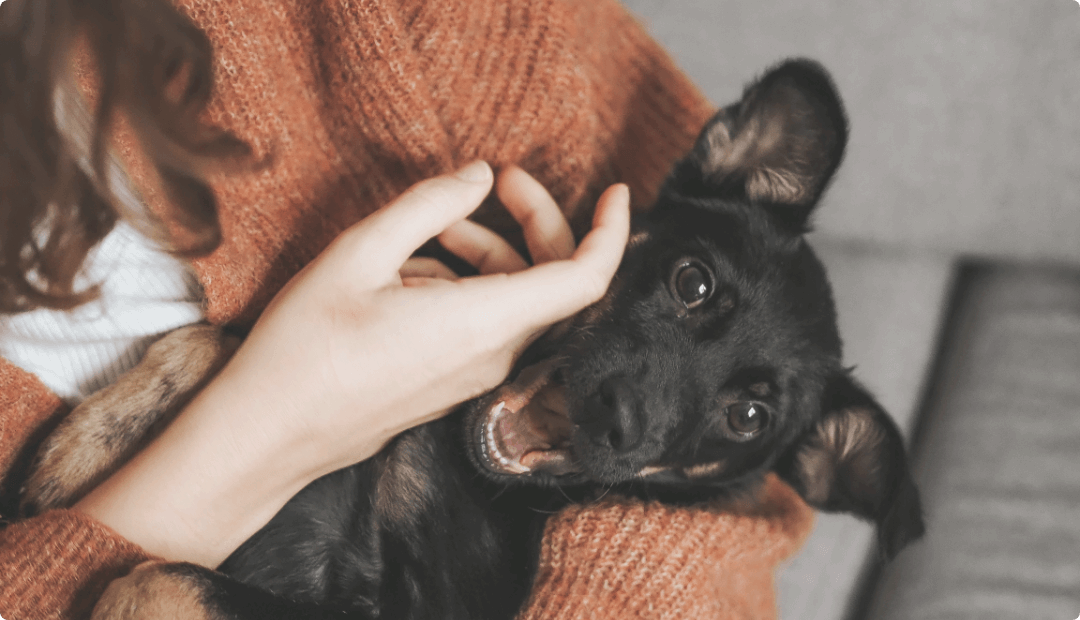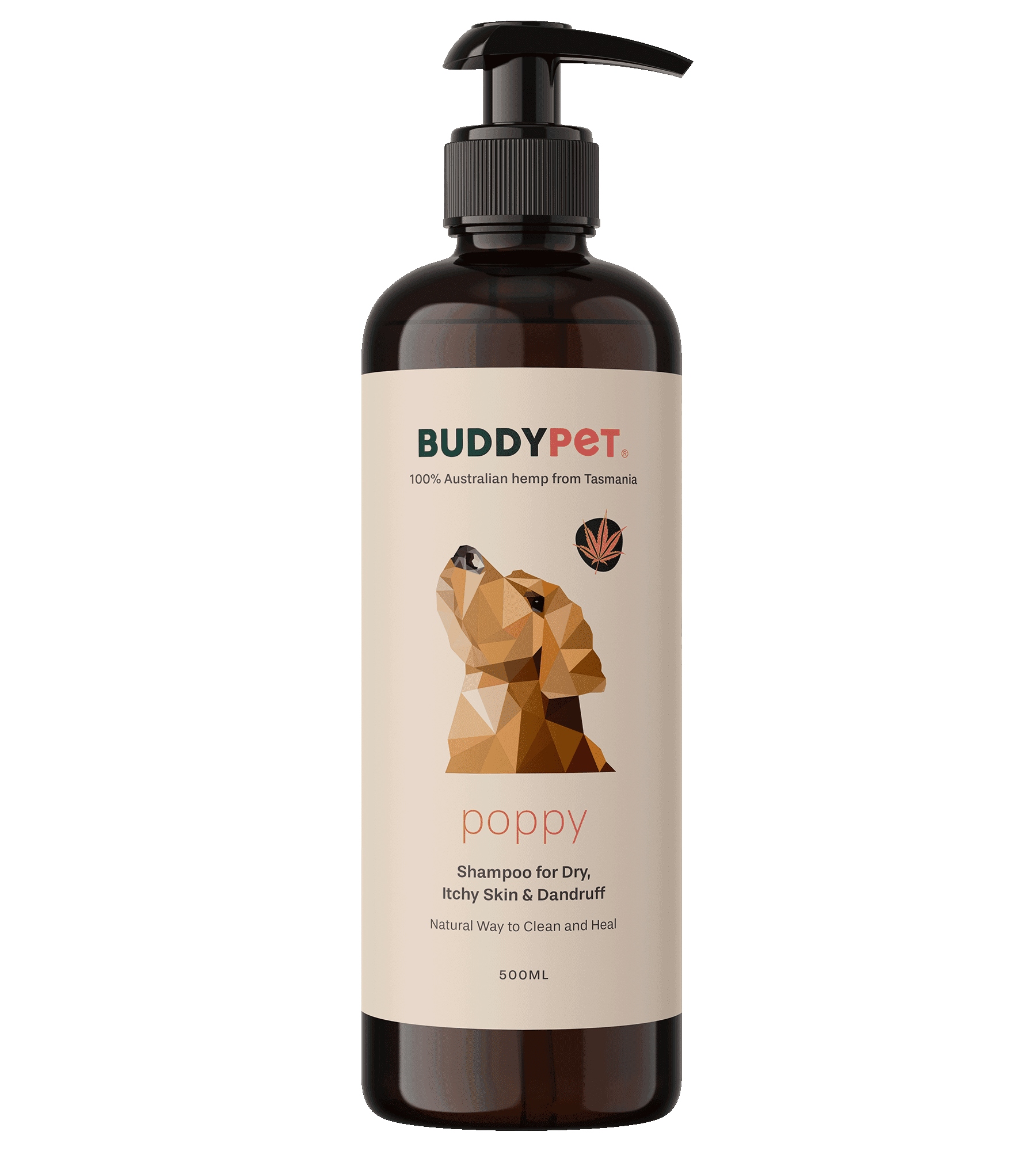If you’re getting ready to leave the house and notice your dog is following you, whining, pacing or even trembling as you gather your things, this may be your pet’s first sign of separation anxiety. Maybe you think your pet is just clingy, which is probably true, but the reality is that your dog is suffering emotional stress when you’re gone.
Don’t worry; this is pretty common! That’s why we are here to help! This article will cover some tips and tricks to combat your dog’s separation anxiety and clinginess.
What Is Canine Separation Anxiety?
Separation anxiety in dogs is when a pet becomes so overwhelmingly distressed by their owner leaving the house or being left alone that they display unwanted emotional responses. Usually, these responses include the following:
- Destructiveness: Dogs often destroy their beds, furniture or the owner’s belongings when left alone. Watch out for your favourite slippers and sunglasses!
- Self-trauma: Self-trauma most often occurs when a dog is kept in a kennel or room. Their desperate attempts to escape the enclosed space result in injury to the mouth or other body parts. (Also can be a sign of confinement anxiety.)
- Pacing and restlessness: Your little buddy hates you being gone and paces anxiously until they become exhausted or until you return home.
- Barking and whining: Some dogs will cry out or bark excessively when left home alone. Your neighbours will be sure to let you know
- Potty accidents: Your once potty-trained dog is now having accidents in the house when you leave? Hmm, it sounds like some separation anxiety.
How Do I Know If My Dog Is Just Clingy?
Clinginess is certainly not unusual, especially in smaller dogs. If your dog always wants to be by your side, to the point where they either cling to you physically or show symptoms of distress when apart from you, then you need to face the facts; your dog has separation anxiety.
It’s okay, though, because it’s becoming a pretty common diagnosis at veterinary clinics - the pandemic hasn’t helped those numbers either as dogs were used to their owners being at home all the time and suddenly they started going back to work or back out and the dogs found themselves alone in the house!
If you are not sure if your dog is a clingy, velcro dog, read Clingy Dogs: Is Your Dog a Velcro Dog?
Why Is My Dog Clingy?
Most dogs can be clingy for several reasons. Sometimes it’s just a matter of them not being properly socialised with other people, places or things, creating a strong yet unhealthy bond to the owner.
BUT, that’s certainly not the only cause:
- Separation anxiety: Yep, just like we’ve talked about already. The dreaded separation anxiety is the leading cause of clinginess in dogs.
- Illness and age: Sometimes, when our dogs don’t feel good, they will reach out to their owners, usually clingy, as a form of comfort.
- Breed: That’s right, some dog breeds are just naturally more clingy and prone to separation anxiety. Small breeds such as Shih Tzus and Chihuahuas can be this way, but so can bigger breeds such as German Shepherds or Labradors.
How Can You Help?
The most important thing to know about dogs exhibiting signs of separation anxiety is that you must remain patient and consistent. These pets really just love you so much, and we don’t want to change that, but we do need to adjust how they handle their emotions when left alone.
So, if you’ve got a clingy, velcro dog, then try incorporating these few things to reduce their separation anxiety:
- Increase exercise: Exercise is good for the body and mind! Dogs that display symptoms of anxiety benefit greatly by increasing their daily activity. Remember your pet’s age and physical limitations when incorporating a new exercise routine.
- Normalize leaving them: Make leaving the house a normal and non-stressful experience. Do not make a big deal out of going somewhere, and do not celebrate when you come home. Practice picking up your keys and doing your routine, even when you’re not leaving. This makes any future leaving seem less triggering to your anxious dog.
- Create a space for them: This is usually somewhere where your dog feels safe and comfortable, like their bed or a kennel. If you notice them being stressed out or too clingy, tell them to go to their “bed” or “special space”. This helps redirect the behaviour in a healthier way.
- Give them something to do: Dogs can become bored and look to you for some entertainment. If you provide them with mental stimulation through interactive toys and puzzles, you will notice them being more independent and less clingy.
- Don't carry your dog around! That’s right. If you have a little dog and spend most of the day carrying them around, you are not doing your pet or yourself any favours. To develop confidence, your dog needs to learn what it’s like to walk on all fours, inside and outside the home.
Easing Canine Separation Anxiety with Hemp Oil
Two hemp-derived oils could be of help here.
Hemp seed oil - extracted from the seed of the hemp plant, hemp seed oil has been shown to reduce anxieties and disorders like PTSD through a combination of effects of the anti-inflammatory actions of the fatty acids, antioxidants and the anti-depressant actions of phytosterols. More on the health benefits of hemp seed oil for pets in our article Hemp Seed Oil Benefits.
Hemp CBD oil - extracted from the leaves and flowers of the hemp plant, CBD oil works on the Endocannabinoid System (ECS), a network of thousands of receptors all over the body, including the brain and central nervous system. It regulates various functions such as sleep, mood and pain. All animals have highly developed ECS, so treating stress and anxiety symptoms with hemp seed oil has become increasingly popular with pet owners. More on the benefits of the hemp CBD oil in our Ultimate Guide to CBD Oil for Pets.
Try BUDDYPET Marley, 100% raw, organic, hemp seed oil from Tasmania. Add directly to food or if your pet prefers, have them lick it straight off a spoon. Many of our customers report improvement in their pet’s mood within a week.
Conclusion: How to Ease Anxiety in Your Velcro Dog
Many of us cherish having our four-legged friend by our side, but sometimes it leads to unwanted separation anxiety and clinginess from our pups. This emotional response is best to avoid, so following the above tips and tricks for improving your dog’s overall confidence should ease the stress they feel when you leave the house.
If you feel your dog’s behaviour is not improving after trying the above, speak to your Vet or behaviourist about other options.
Photo by Jacob Curtis on Unsplash




